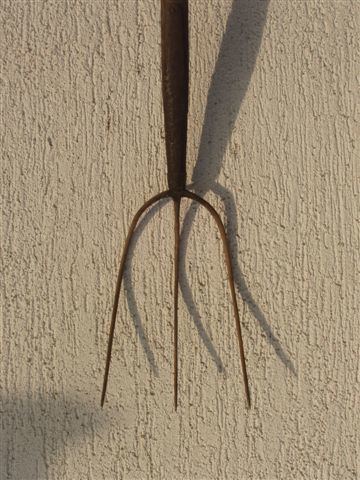 | ||
Tines or prongs or teeth are parallel or branching spikes forming parts of a tool or natural object. They are used to spear, hook, move or otherwise act on other objects. They may be made of metal, wood, bone or other hard, strong materials.
The number of tines (also written tynes) on tools varies widely – a pitchfork may have just two, a garden fork may have four, and a rake or harrow many. Tines may be blunt, such as those on a fork used as an eating utensil; or sharp, as on a pitchfork; or even barbed, as on a trident. The terms "tine" and "prong" are mostly interchangeable. A tooth of a comb is a tine.
Tines and prongs occur in nature—for example, forming the branched bony antlers of deer or the forked horns of pronghorn antelopes. The term "tine" is also used for mountains, such as the fictional Silvertine in The Lord of the Rings.
In chaos theory (physics, non-linear dynamics), the branches of a bifurcation diagram are called tines and subtines.
